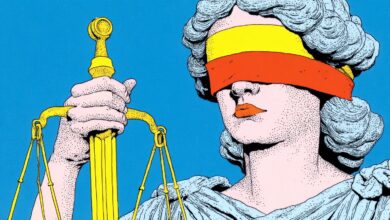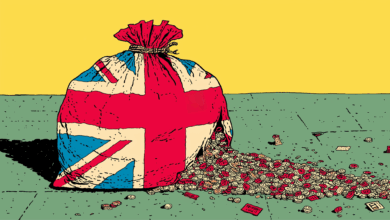Spooky Economics

My neighborhood is stalked by 12′ skeletons, huge spiders, and gigantic inflatable cats with rolling eyes and wagging tails. Animatronic witches cackle as I walk by. In one yard, skeletons in team jerseys are playing soccer. Another is full of disturbingly realistic gravestones. There are mannequins on porch swings with glowing red eyes.
It’s “Spooky Season.” The scope of Halloween has expanded from a single day into a weeks-long festival, creeping back into mid-September. Gone are the days of just putting out a jack-o’-lantern on the 31st to indicate you were open for business, trick-or-treating-wise.
Today, the economics of the day are massive. In 2024, American consumers spent $13.1 billion on the holiday, up from $2.5 billion in 1995. Candy spending alone was expected to reach $3.9 billion. (This also dwarfs the candy spending of Valentine’s day, which clocks in at $2.5 billion.)
People are spending more on Halloween costumes and decor than they do on candy, each coming in at over $4 billion. Fancy decorations can be pricey (a single life-size animatronic figure will run you around $200); tricking out your whole house with a light display and characters will quickly add up.
A recent Reddit discussion began with a poster asking how much everyone is spending on Halloween, adding: “I am planning for $15,000, is this typical or higher then [sic] needed?”
That this sum did not seem completely insane to many commenters shows how many people are willing to go all-in on Halloween, with others mentioning spending thousands on lighting decks and displays. (I’m cheap, so I spent about $10 on a costume, and ordered some Walmart candy. My mother still has my plastic pumpkin candy basket.)
But I am wearing a costume. One noticeable change contributing to the growth in Halloween in recent years is adults getting in on the action. Parents now dress up as much as children do, and there are plenty of adult-focused Halloween events. This could be because there are fewer opportunities for costumes otherwise.
In the first half of the 20th century, fancy-dress parties were common; birthdays, Christmas, and New Year’s Eve meant playful outfits.
Employees of the Pacific Telephone & Telegraph at a company party, Seattle 1920 (Wikimedia)
These occasions for costumes seem to have fallen away, leaving Halloween the obvious choice for when you really want to dress as a Billy the Kid or a tomato, or perhaps Comic Con if your tastes run more to sci-fi (smart to amortize the value of that Iron Man suit through multiple wears).
Adults dressing up for Halloween has increased the level of competitiveness (as well as increased the quality) of costumes and decor. A printed plastic bag just isn’t going to cut it.
People share photos of their costumes on social media, and can get in on the latest pop culture trends, reinforcing the arms race. I wrote last year about the rise of Spirit Halloween and its role in this cultural shift. Up-to-date and affordable costumes are available. (The most popular costume idea this year, according to Yahoo! News, is a character from Netflix’s K-Pop Demon Hunters.)
This kind of entertainment has also been part of the increasing attraction to spooky themes. Horror movies have exploded in recent years to become a major phenomenon. Horror movies’ share of box office revenue has grown from only under 3% of the market in 2014 to 10% by 2024. Cheap slasher flicks have given way to big-budget productions with major stars. This year’s The Conjuring: Last Rites (the fourth film in the series starring Patrick Wilson and Vera Farmiga) hit over $83 million domestically its opening weekend, and is heading for $500 million in global revenue. Streaming channels are running “scary” film seasons to remind everyone what time of year it is (in case you’d missed the cobwebs on porches and witch silhouettes in windows).
Ghosts and skeletons are now haunting our calendars from September onwards, being only swept away by the Turkeys and Pumpkins of Thanksgiving. As our spending patterns for Halloween show, we all love Spooky Season.
The post Spooky Economics was first published by the Foundation for Economic Education, and is republished here with permission. Please support their efforts.



